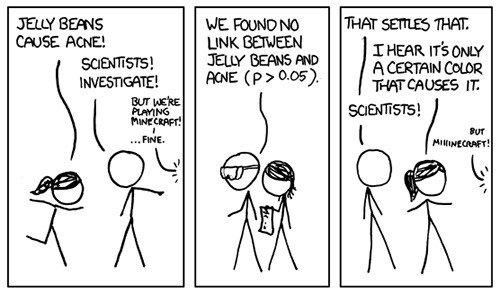Posts by: Margaret Harris
US immigration and trade policies provoke debate at Photonics West

San Francisco’s Golden Gate Bridge welcomes scientific visitors to Photonics West – except for those banned from travelling to the US.
By Margaret Harris at Photonics West in San Francisco
“I’m an immigrant. I stole one American job. I helped create hundreds of thousands of others.”
Deepak Kamra’s words caused a stir among listeners at Photonics West, the massive industry trade show and scientific conference that descends on San Francisco, California each winter. Speaking at a panel discussion on “Brexit, US Policy, EU and China,” the Delhi-born veteran of the Silicon Valley venture capital scene said that he expected the new US administration – which recently imposed a travel ban on visitors from seven majority-Muslim countries – to target Asian and South Asian technology workers next. Restrictions on the number of foreign-born students studying science, technology, engineering or mathematics (STEM) at US universities could follow. Ultimately, Kamra concluded, “We are going to lose a lot of qualified people.”
View all posts by this author | View this author's profile
To the stars, through adversity
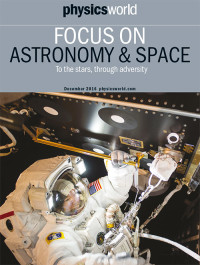 By Margaret Harris
By Margaret Harris
Space is, famously, “the final frontier”. It is also – almost as famously – “hard”. We saw this most recently in October, when the Schiaparelli lander crashed onto the surface of Mars, but throughout humanity’s nearly 60-year history as a spacefaring species, our hopes of exploring and observing the cosmos have repeatedly come up against the stiff challenge of building vessels that can survive the journey. Arguably, no other industry on Earth (or indeed off it) has rejoiced in such high “highs”, or agonized through such low “lows”.
That mix of heady dreams and harsh realities is one reason why the latest Physics World focus issue on astronomy and space science carries the tag line “To the stars, through adversity” (I’ll come to the other reason at the end of this blog post). The articles in the issue – which you can read free of charge – pay tribute to the ingenuity of the scientists and engineers involved in the challenging and rewarding practical work of exploring and observing the cosmos. Here, you can learn about the latest advances in astronomical instrumentation, get up to speed with future space missions, and familiarize yourself with recent developments in the entrepreneurial “new space” industry.
View all posts by this author | View this author's profile
My first experience of peer review

(Courtesy: Shutterstock/Lorelyn Medina)
By Margaret Harris
My first experience of being peer reviewed did not begin well. Here’s the opening of the referee’s report:
“The purpose of publication is to disseminate knowledge to other people who may be able to use it. Since the model dramatically fails the authors’ own experimental tests more than half of the time, I can’t imagine anyone wanting to use it. I therefore recommend against its acceptance, here or anywhere else.”
When a water slide goes wrong
By Margaret Harris
A couple of years ago, I came across what I thought was a funny (and physics-related) video about a water slide. The slide is called “Verrückt”, which my German-speaking colleagues translate as “mad” or “crazy”, and it caught my attention because it was being built at an amusement park in my home town of Kansas City. As the video shows, the slide experienced a few problems during its testing phase.
“When the rafts are loaded with more than 1000 pounds, the slide becomes unsafe,” says the video’s announcer as the test raft goes airborne. “We’re going to have to redesign the entire slide,” an unnamed official adds.
View all posts by this author | View this author's profile
Open science, accessible science?
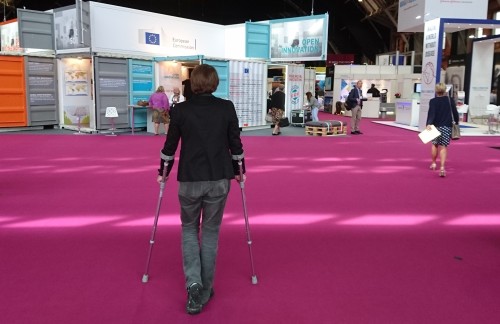
Preparing to navigate the exhibit hall at the European Science Open Forum on crutches
By Margaret Harris
As I prepared to travel to Manchester earlier this week for the 2016 European Science Open Forum (ESOF), I had an unwanted extra item on my to-do list: working out, in detail, whether it was physically possible for me to attend.
My problem was my foot: a few weeks ago, I broke it, and as ESOF approached, it became clear that my injury wouldn’t heal in time. I was wary of trying to do a conference on crutches, but the reassuring responses to my queries (yes, my hotel had accessible rooms; yes, the venue for the conference, Manchester Central, was “very accessible”) convinced me that it would be okay. So I headed off to Manchester last Sunday for two days of science talks – and got an eye-opening lesson on what it’s like to attend a scientific conference with a physical disability.
Lateral Thoughts: Playing favourites

(Courtesy: iStock/hidako)
By Margaret Harris
This is the fourth in a series of blog posts about “Lateral Thoughts”, Physics World’s long-running humour column. Click to read the first, second and third posts.
As the editor in charge of Lateral Thoughts – Physics World’s long-running column of humorous or otherwise offbeat essays on physics – I am sometimes* asked whether I have a favourite. It’s an interesting question, and back in 2014, when I was writing a series of posts for this blog about how Lateral Thoughts had changed over the (then) 25-year history of Physics World, I promised to answer it.
This, however, proved easier said than done. In the weeks that followed my foolish pledge, the Physics World inbox (pwld@iop.org) received a whole series of Lateral Thoughts essays that could have been my “favourite”. One of them, published in May 2014, was John Swanson’s discourse on the quantum nature of the 20:08 train from Bristol Parkway. Another, which appeared in June 2014, contained Chris Atkins’ gloriously straight-faced analysis of the physics of Poohsticks. A third, in July 2014, saw kung-fu expert Felix Flicker explore an unexpected connection between the mathematics of spinors and the art of escaping from an armlock. Then, in August 2014, John Evans pondered various physics-based ways of improving his running – such as refining his aerodynamic profile by developing a beer belly. (Evans, incidentally, went on to write a Lateral Thought on cycling in October 2015, and this month we published his essay on swimming. This means he’s now completed a lateral-thinking triathlon. Congratulations!)
View all posts by this author | View this author's profile
Playing poker with robots on Mars
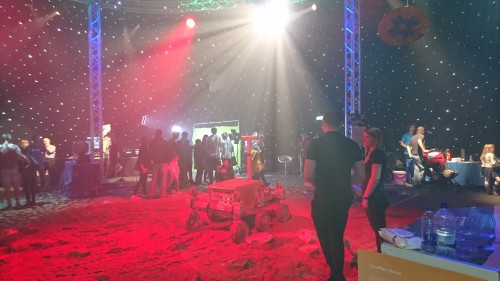
A prototype of the ExoMars rover trundles around inside the “space dome” at the Cheltenham Science Festival.
By Margaret Harris
How do you keep an astronaut alive, sane and (ideally) happy during a mission to Mars? The world’s space agencies would very much like to know the answer, but gathering data is tricky. The International Space Station (ISS) makes a good testbed for experiments on the physical effects of space travel, but psychologically speaking, ISS astronauts enjoy a huge advantage over their possible Mars-bound counterparts: if something goes badly wrong on the station, home is just a short Soyuz ride away. Martian astronauts, in contrast, will be on their own.
For this reason, space agencies have become interested in learning how people cope in extreme environments here on Earth, particularly in locations where rescue is not immediately possible. That’s why the European Space Agency (ESA) sent Beth Healey, a British medical doctor, to spend the winter of 2015 at Concordia Research Station, a remote base in the interior of Antarctica. During the continent’s nine-month-long winter, temperatures at Concordia can plunge as low as –80 °C, making it inaccessible even to aeroplanes, which cannot operate at temperatures below –50 °C. So once the last flight left in February 2015, Healey and the 12 other members of the overwintering team were stuck there until November.
View all posts by this author | View this author's profile
On the frontline of the ‘reproducibility crisis’
By Margaret Harris
The “reproducibility crisis” in science has become big news lately, with more and more seemingly trustworthy findings proving difficult or impossible to reproduce. Indeed, a recent Nature survey found that two-thirds of respondents think current levels of reproducibility constitute a “major problem” for science. So far, physics hasn’t been affected much; the crisis has been most severe in fields such as psychology and clinical research, which, not coincidentally, involve messy human beings rather than nice clean atomic systems. However, that doesn’t mean it’s irrelevant to physicists. Last month, I had the pleasure of speaking to three physics graduates who have become personally involved in addressing the reproducibility crisis within their chosen profession: medicine.
Henry Drysdale, Ioan Milosevic and Eirion Slade are third-year medical students at the University of Oxford. All three earned their undergraduate degrees in physics, and they now make up one-third of COMPare – an initiative by Oxford’s Centre for Evidence-Based Medicine (CEBM) that tracks “outcome switching” in clinical trials. As Drysdale explained to me over coffee in an Oxford café, researchers who want to perform clinical trials have to state beforehand which “outcomes” they intend to measure. For example, if they are trialling a new drug to treat high blood pressure, then “blood pressure after one year” might be their main outcome. But researchers generally keep track of other variables as well, and often their final report focuses on a positive result in one of these other parameters (a dip in the number of heart attacks, say), while downplaying or ignoring the drug’s effect on the main outcome.
View all posts by this author | View this author's profile
Finding innovation in space
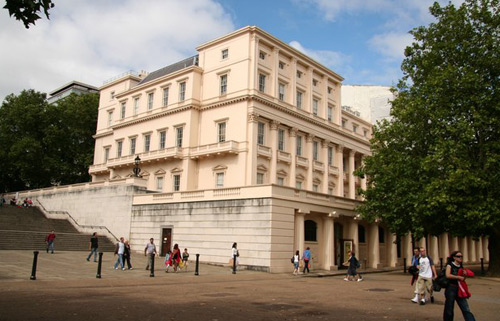
Way to go: Carlton House Terrace. (CC BY-SA 2.0 Richard Croft)
By Margaret Harris
I have a mental block about Carlton House Terrace. This elegant little street in central London is home to several of the UK’s national academies, including the Royal Society and the Royal Academy of Engineering (RAEng), and I’m sure I’ve visited it at least half a dozen times. Yet somehow, whenever I emerge from Charing Cross underground station in the middle of Trafalgar Square, I never know which way to go next.
Fortunately, this is the 21st century, so when the usual disorientation struck me yesterday on my way to an “Innovation in Space” event at the RAEng, I simply pulled out my smartphone. Within seconds, an app told me exactly where I was (plus or minus a few metres) and how to walk from there to 3 Carlton House Terrace. Minutes later, I was safely ensconced in the seminar room, nodding in agreement as the event’s chair, Sir Martin Sweeting, explained how space-related innovations – including, ahem, the network of satellites that make up the Global Positioning System (GPS) – have become an integral part of our daily lives.
View all posts by this author | View this author's profile
Something more concrete
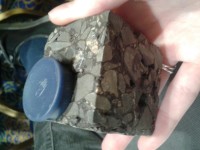
A sample of asphalt to which steel-wool fibres have been added, making the material magnetic.
By Margaret Harris at the AAAS Meeting in Washington, DC
Although Thursday’s LIGO result was extremely exciting, I’m afraid I can only spend so much time pondering ripples in the fabric of space–time before I start yearning for something a little more…concrete. Like, well, concrete. And asphalt. And cement. These decidedly ordinary materials were the stars of two of the most fascinating talks I’ve seen at the AAAS meeting here in Washington DC over the past two days.
First up was Erik Schlangen, a civil engineer at the Delft University of Technology in the Netherlands who develops “self-healing” materials. One of his projects (which you can watch him demonstrate in a TED talk) involves mixing porous asphalt with fibres of steel wool. The resulting conglomerate is magnetic (that’s a magnet sticking to it in the photo), which means that microscopic cracks in it can be repaired using induction heating. The heat melts the bitumen in the asphalt, allowing it to re-fuse, but the surrounding aggregate remains relatively cool – meaning that cars can be driven over asphalt road surfaces almost as soon as the repair is complete.
View all posts by this author | View this author's profile
